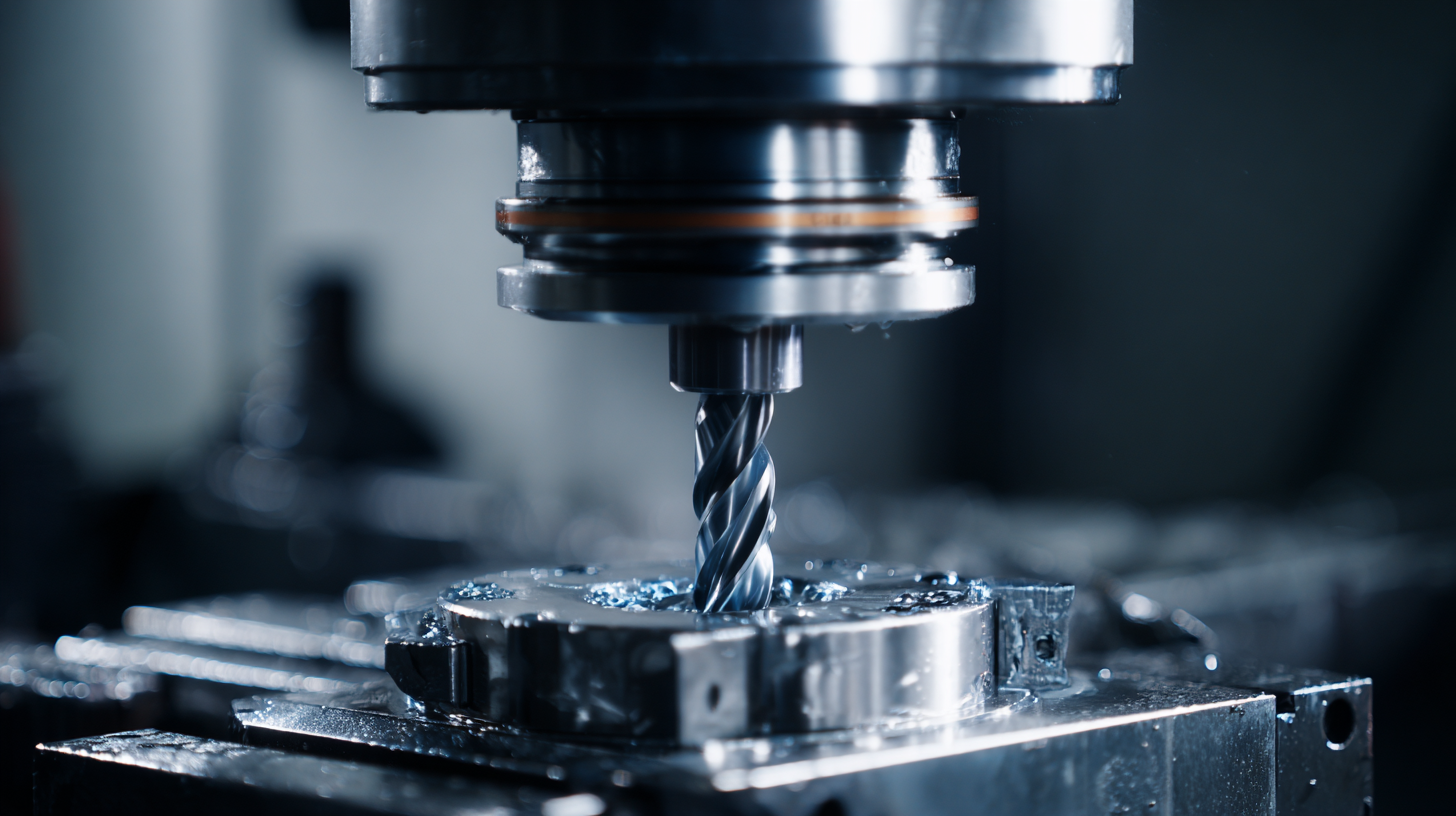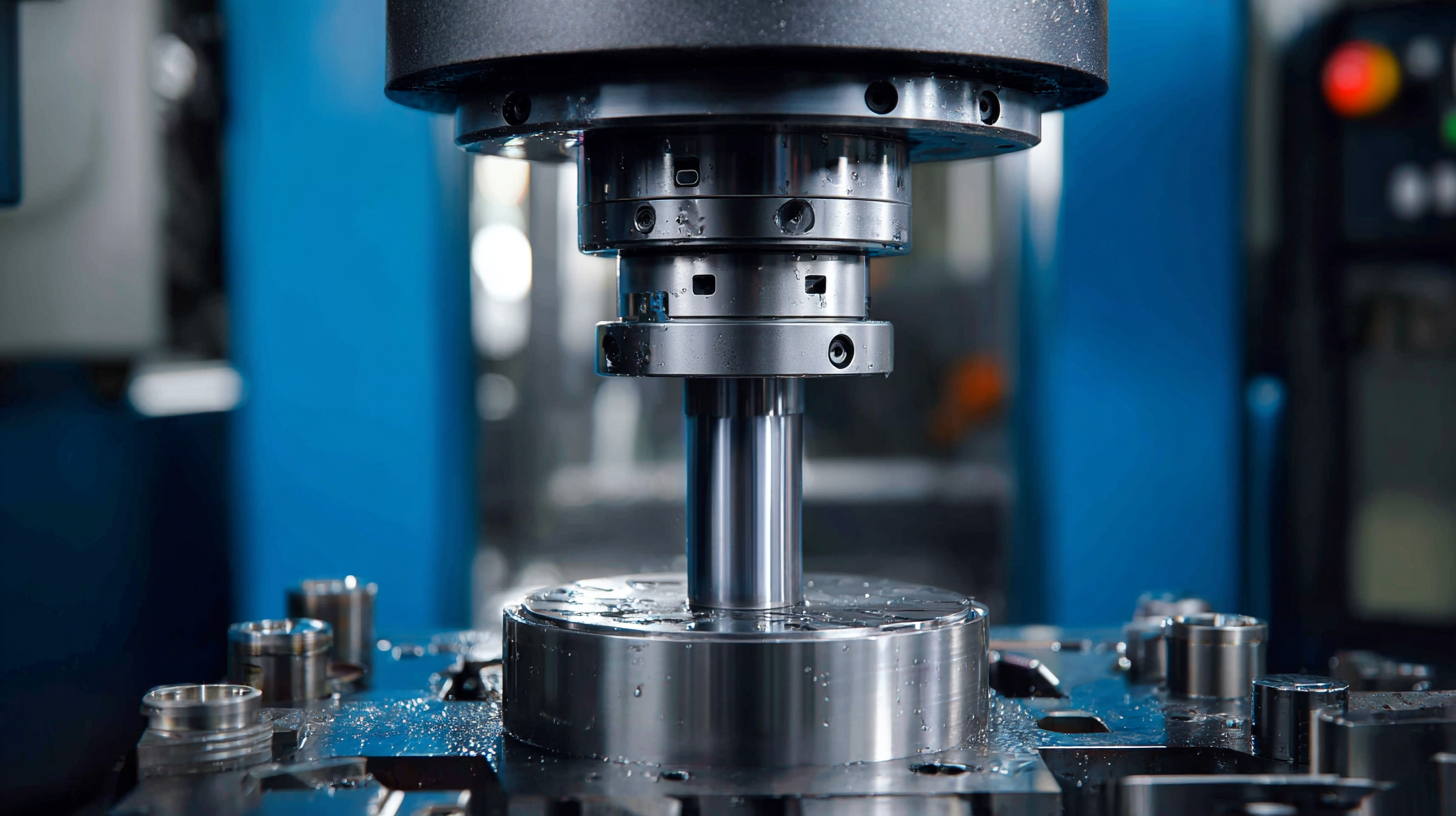SUNDI TOOLS
- Copyright © Wuxi Sundi Precision Tools Co.,LTD All rights reserved.
- Site Map
In the realm of machining, the significance of selecting the right Deep Hole Drilling Machine cannot be overstated, especially with the projected market growth of 5.1% annually, reaching $5.66 billion by 2027, according to a recent industry report. Deep hole drilling is a critical process in various sectors, including aerospace, automotive, and oil and gas, where precision and efficiency are paramount. However, navigating the multitude of options available can be daunting due to differing technologies, specifications, and applications. Manufacturers are often confronted with challenges such as maintaining accuracy, ensuring surface finish quality, and optimizing cycle times. This ultimate guide aims to demystify the complexities involved in choosing the best deep hole drilling machine, equipping industry professionals with the necessary insights to make informed decisions that align with their operational needs and long-term goals.

When selecting the best deep hole drilling machine, several key factors play a crucial role in the decision-making process. One major consideration is the type of drilling method employed, such as gun drilling or BTA (Boring and Trepanning Association). Each method has its unique advantages and is suited for different applications. Understanding the specific requirements of the project can help narrow down the options, ensuring that the selected machine is equipped for the desired hole size, depth, and material type.
Another significant factor is the machine’s accuracy and precision. Deep hole drilling often requires tight tolerances, especially in industries such as aerospace and automotive, where the integrity of components is paramount. Evaluating the machine's capabilities in terms of spindle speed, feed rates, and tooling options can greatly influence the overall quality of the final product. Additionally, considering the machine's ease of use, maintenance requirements, and technological features can impact productivity and operational costs, making it essential to choose a machine that balances performance with user-friendly design.
| Key Factor | Description | Impact Level | Example Machines |
|---|---|---|---|
| Drilling Depth | The maximum depth that can be drilled. | High | Machine A, Machine B |
| Hole Diameter | The range of diameters the machine can create. | Medium | Machine C, Machine D |
| Feed Rate | How quickly the drill moves into the material. | High | Machine E, Machine F |
| Material Compatibility | Ability to drill different materials effectively. | High | Machine G, Machine H |
| Cooling System | Effectiveness of the cooling system during drilling. | Medium | Machine I, Machine J |
| Automation Level | Degree of automation in the drilling process. | Medium | Machine K, Machine L |
| Cost of Operation | Overall cost of running the machine. | High | Machine M, Machine N |
Deep hole drilling technologies have advanced significantly in recent years, presenting manufacturers with numerous options tailored to specific applications. A comparative analysis of these technologies, including gun drilling, BTA (Boring and Trepanning Association), and EDM (Electrical Discharge Machining), reveals distinct advantages and challenges for each method. According to a report by ResearchAndMarkets, the global deep hole drilling machinery market is projected to grow at a CAGR of over 5% from 2021 to 2026, emphasizing the increasing demand for precision drilling solutions across various industries.
Gun drilling is often favored for its efficiency in producing high-precision holes with excellent surface finish quality, making it ideal for applications in aerospace and automotive sectors. Conversely, BTA drilling allows for deeper holes with larger diameters and is particularly effective for drilling large quantities of components. The same report estimates that BTA technology accounts for approximately 30% of the deep hole drilling market due to its versatility in handling tough materials and high production rates. Meanwhile, EDM, though slower, provides unparalleled precision for intricate geometries, proving essential in mold and die manufacturing.
Ultimately, the selection of the best deep hole drilling technology hinges on factors such as the material being processed, hole specifications, and production volume requirements. As manufacturers navigate these challenges, understanding the comparative strengths and limitations of each drilling method is vital for optimizing their manufacturing processes and enhancing operational efficiency.
In the realm of deep hole drilling, selecting the right machine is crucial for ensuring operational longevity. However, it's not just about the initial selection; ongoing maintenance and support play a pivotal role in the machine's lifespan. Regular maintenance checks help identify potential issues before they escalate, ensuring the equipment continues to operate at peak performance. Implementing a structured maintenance strategy allows operators to leverage advanced technologies, such as predictive maintenance, which can anticipate machinery issues through data analysis instead of relying solely on manual inspections.
Moreover, environmental factors can significantly impact the longevity of drilling equipment. Just as coatings designed for offshore energy infrastructure enhance resilience against corrosion and UV damage, similar protective measures should be advocated for drilling machines. This approach not only prolongs the equipment's life but also maximizes productivity and minimizes costly downtimes. By focusing on tailored maintenance systems and environmentally-conscious solutions, companies can move toward achieving long-term operational efficiency and sustainability in deep hole drilling projects.
When it comes to selecting the best deep hole drilling machine, conducting a thorough cost-benefit analysis is essential. While the initial investment in high-quality equipment may be significant, this expense can ultimately lead to greater long-term savings through increased efficiency and reduced maintenance costs. Budgeting for quality deep hole drillers requires evaluating not only the purchase price but also the expected lifespan, warranty, and performance capabilities of the machine. A well-constructed drilling machine may come with a higher upfront cost but will deliver superior results and lower operational costs over time.

Tip: Always factor in potential downtime when budgeting for your drilling equipment. A cost-effective machine that frequently requires repairs can end up being more expensive than anticipated. It’s wise to compile data on the reliability and performance of various models to ensure that you make an informed choice.
Additionally, consider the hidden costs associated with deep hole drilling. These may include the expense of tooling, operational training for your staff, and energy consumption. A comprehensive analysis of these factors will help you make a more informed financial decision, ensuring that your investment aligns with your company’s long-term goals.
Tip: Seek feedback from industry peers about their experiences with different machines. Real-world insights can be invaluable in guiding your selection process and may uncover models that offer the best value for your specific needs.
The future of deep hole drilling technology is evolving rapidly, driven by advancements aimed at enhancing efficiency and sustainability. Recent reports indicate a notable trend in the integration of smart manufacturing systems within drilling processes, specifically designed to tackle challenges in high-speed machining. For example, as outlined in the latest findings, optimizing the drilling of tough materials such as Inconel 718, crucial for aerospace and energy sectors, can significantly improve productivity while reducing tool wear and associated costs.
In addition, the push towards renewable energy sources is exemplified by innovations like geothermal drilling techniques, which aim to tap into deep geothermal resources. This approach not only promises a reliable and sustainable power source but also aligns with global efforts to transition towards cleaner energy. Industry forecasts suggest that the rock drilling equipment market will witness substantial growth by 2032, driven by these technological advancements in mineral exploration and geothermal energy sectors. As we move into 2025, the focus is on refining drilling methods to enhance precision and minimize environmental impact, setting the stage for a more efficient future in drilling operations.
